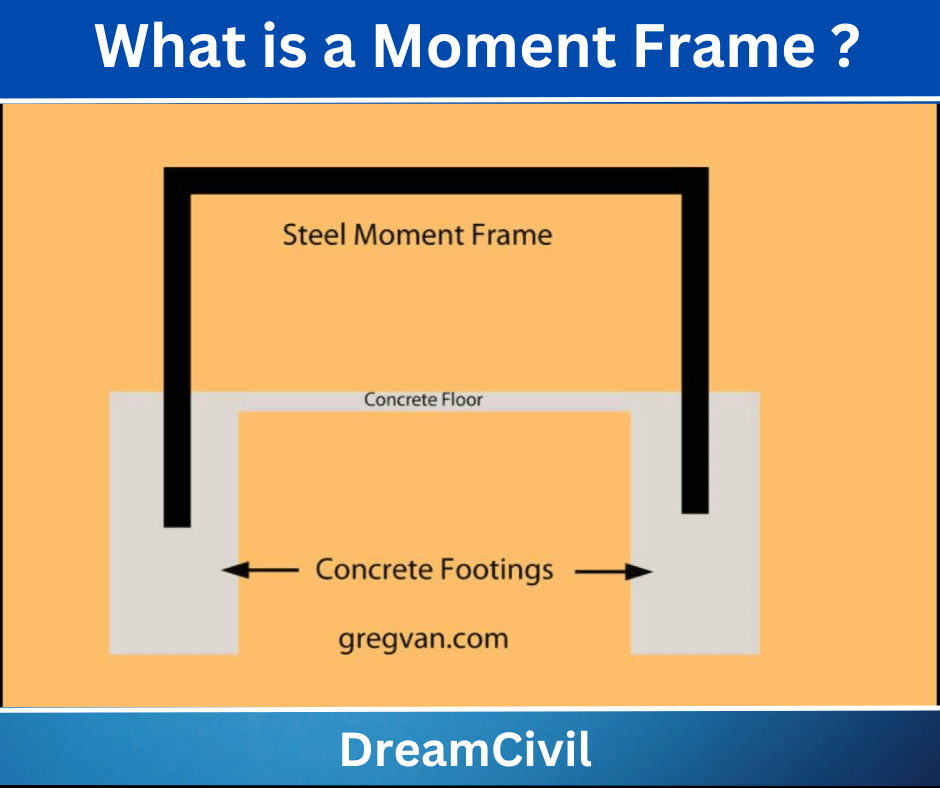Table of Contents
A moment frame may be defined as a two-dimensional series of interconnected members joined together.
What is a Moment Frame, types of moment frames are well described below.
The frame allows a building to turn as essential to stay the building’s integrity. There are mainly 3 types of moment frames:
a. Ordinary moment frames (OMF)
b. Intermediate moment frames (IMF)
c. Special moment frames (SMF)
The designing of the Building to withstand the seismic loads is expensive as compared to other designs. Moment frame is one of the most satisfactory alternatives which is majorly utilized in the construction industry to develop the structure in earthquake-prone areas.
Moment frames are structurally planned to bear both horizontal and vertical loads in the same plane.
1. What is a Moment Frame?
The Moment frames are a unique type of frame that are precisely connected with each other of their components so that they will able to withstand the overturning forces and Lateral forces acting on them because of the bending moment and shear strength.
The whole strength of the moment frames while prepared to take the seismic loads mostly relies upon the stiffness and strength of the members.
Moment frames are shared through the connections and it depends mostly on the rigid connections which will distribute the lateral loads to the below strata of the foundation.
One of the major benefits of moment frames is that they possess more capability of deformation and very slight stiffness as compared to any other types of Frames.
Moment frames are employed to withstand earthquake loads and the construction of the moment frames are not infilled with the materials such as concrete or another masonry which major modifications the behavior of the moment frames.
2. Types of Moment Frames
There are different types of moment Frames which are as noted below:

1. Ordinary Moment Frame (OMF)
This type of portal frame system delivers very small resistance towards lateral movement and so it is just employed for zero or low seismic zones.
2. Intermediate Moment Frame(IMF)
The intermediate moment frames are developed in such a manner that they will remove the limited inelastic deformations in the Moment Frames. The inelastic deformation at the moment frames are developed due to the lateral forces.
3. Special Moment Frame (SMF)
Special moment frame connections are one of the most powerful and long-lasting connections that are specially developed to stand the inelastic deformation in the members when it experiences lateral forces.
3. Difference Between Braced Frame and Moment Resisting Frame
The difference between a braced frame and moment resisting frame are as follows:
| Braced frame | Moment resisting frame |
| A pin connection is employed to make the beam-column joints. | A rigid connection is employed between beams and columns. |
| The connection does not share moments. | Moments are shared through the connection. |
| It relies on the bracing system, to share lateral loads to the foundation. horizontal and vertical bracing systems are employed. | It depends on the rigid connection to share lateral loads with the foundation. |
| The analysis of the braced frame structure is easy and simple. | The analysis of the connection is fairly complex. |
| It is not labor intensive. | It is substantially labor intensive. |
| Cost-effective because the pinned connection is easy to analyze and easy to build. | Expensive to build. |
| Delivers good stabilization to the structure. | The method of stabilization is not as best as braced frames. |
| A braced frame system is usually employed in the construction of steel and timber structures. | Reinforced concrete structures essentially use moment-resisting frames. |
| Beams and columns are examined under vertical loads only, considering the bracing system supports all lateral loads. | Beams and columns are examined under axial loads and moments. |
| As a minimum, three vertical planes of bracing are required, to give resistance in both directions in the plan and to give resistance to torsion about a vertical axis. | All connections are rigid. |
| It possesses less deformation capacity and more stiffness compared to moment-resisting frames. | Moment-resisting frames contain more deformation capacity and less stiffness compared to braced frames. |
This was for the What is a Moment Frame?
Read Also: Innovative Homes Of Today

